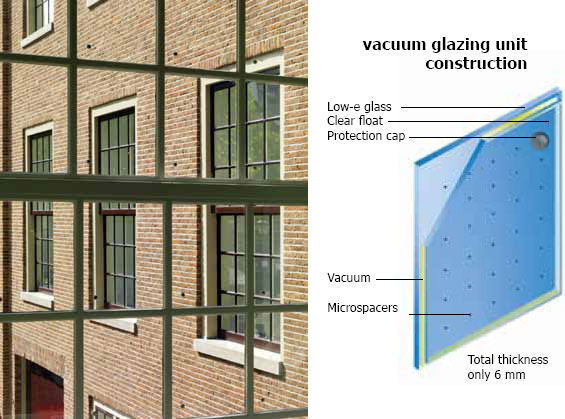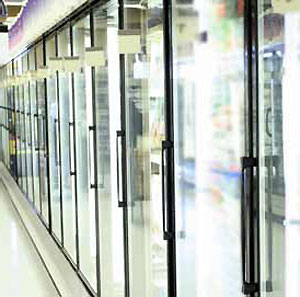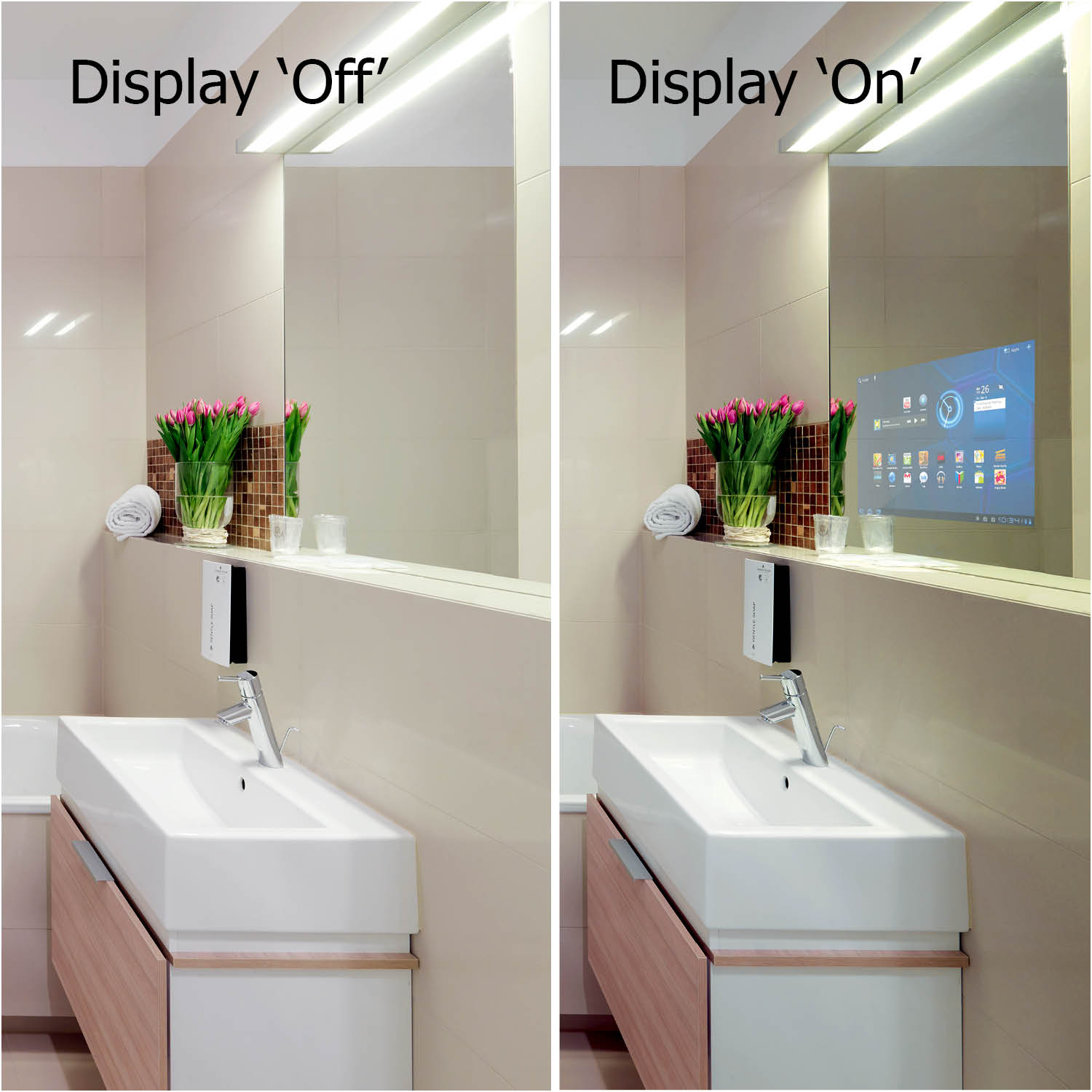Glass Options for Enhanced Building Design
Emerging Technologies
While all of the glass types and products discussed so far represent a fair amount of innovation and technological advances, manufacturers are continuing to pursue even more ways to address building design issues through advanced products. Some of these include the following cutting edge glazing innovations.
Vacuum Insulated Glazing
A vacuum, is very effective at minimizing conduction and convection heat losses. While a perfect vacuum with zero heat transfer is not easily achievable, it is possible to produce a partial vacuum with notably reduced heat transfer. These insulating principles of vacuums are being applied by some manufacturers to create a high performance glass with a thinner profile. They are offering vacuum insulated glazing that is different than conventional double glazing in that the air between the two panes of glass is extracted, to create the needed vacuum. In order to keep the panes from collapsing in on each other, micro-sized spacers are used to keep the panes apart. Nonetheless, the gap between the two panes can be reduced to just 0.2 mm, giving the glass an overall thickness of just over 6 mm (1/4 inch). Heat flow through radiation can be reduced by covering one of the glass panes with a low-emissivity coating, similar to that used in conventional double glazing. Therefore, despite its thin profile, vacuum insulated glazing can achieve U-factors as low as 0.18 Btu/hr.sqft°F in a ¼ inch profile. That means the same or better thermal performance is achieved as conventional double glazing but in one quarter of the thickness and two thirds the weight. That makes it ideal for retrofit or historic preservation projects where an existing window sash or frame needs to be preserved and conventional insulated glazing units won’t fit. Thus it balances historical preservation with modern comfort and environmental requirements while allowing windows that are more in keeping with the original design.
There are of course some variations available for vacuum insulated glazing. For locations that require solar control, the coated surface can be designed to achieve the needed SHGC. For situations that can accommodate the width of IGUs, it is possible to use a triple glazed, coated vacuum insulating glass unit that gives U-factors as low as 0.12 Btu/hr.sqft°F. This combination uses a vacuum insulated glass unit with a conventional spacer, gas fill and a coated outer pane to create a hybrid unit with superior thermal performance. Both designs allow for minimum disruption in existing buildings making it a cost effective method of improving the energy efficiency. The vacuum also allows for improved acoustic performance over single glazing, enhancing the living and working environment. While this is regarded as an emerging technology in the US, it should be noted that it has been successfully used in Japan for over fifteen years and is really a proven solution.

Photo courtesy of Pilkington North America
Vacuum insulated glazing uses clear micro spacers to keep the panes separated but still allows for good visual clarity in the size and weight of glass suitable for historic renovations.
Electrically Conductive Specialty Glass

Photo courtesy of Pilkington North America
Electrically conductive specialty glass can be used to keep glass panels clear in retail settings where commercial refrigeration is used.
Manufacturers continue to expand and develop the range of coatings that can be used on glass to meet very specific and special needs. As a result, specialty glass has become available that can be used to meet those needs. For example, controlling condensation on glass doors of built in refrigerators / freezers in supermarkets or other retail settings can be an ongoing problem both for maintenance and for visibility of merchandise. As a result, electrically conductive glass has been developed that allows the glass to be electrically heated and overcome this problem. It is color neutral, minimizing reflected color and will not change over time. It easily fabricated with a durable pyrolytic coating that can be handled, cut, insulated, laminated, heat-strengthened and tempered and is even bendable. The heated glass is scratch and abrasion resistant and is available in a variety of glass thicknesses and sheet resistances ranging from 5 ohms/square up to several thousand ohms/square. As a result, heated glass combines thermal control with superior electro-optical properties to keep merchandise clearly visible. Heated glazing has also been used in a variety of architectural applications, such as in restaurants where thermal comfort of the diners is important. Here the heated glazing provides heat to the building occupants.
Other specialty glazing has been developed for electro-optical applications such as computer screens or touch screens in buildings or glazing that will control static when touched. For buildings that want to use photovoltaic (solar-electric) energy, specialty glass and glazing has been developed for both rigid panels and thin film applications. The rise in the use of building integrated photovoltaic cells (BIPV) is made possible because of the effective development and proper use of this type of specialty glazing that maximizes the energy generating potential of these systems.
Switchable Electrochromic Glazing
When glass is tinted or coated it achieves the resultant performance properties permanently. This means that the glass performs the same way all the time regardless of any changing light conditions outside. An innovative alternative is to use glass that can literally be switched from clear, to lightly tinted to dark tinted and levels in between. This is being achieved by using electrochromic coatings which are applied to panes of conventional float glass or float glass coated with transparent conductive coatings. Electrochromic coatings are typically metal oxides and are thin films like other glass coatings. When a very small electric voltage is applied across the coatings, ions travel between layers, where a reversible solid state change takes place, causing the coating to tint and absorb light. Reversing the polarity of the applied voltage causes the ions to migrate back to their original layer, and the glass returns to its clear state. This ability to switch glass back and forth at will is particularly useful and desirable in large daylit spaces where different uses and lighting conditions dictate different needs for the glass. Typically electrochromic glazing should be integrated into the building control system to maximize efficiency. Other types of switchable glazing are available, including LCD based privacy glass and thermochromic and photochromic based materials.

Photo courtesy of Pilkington North America
Semi-transparent mirror glass makes an excellent cover for televisions and digital displays opening up a wide range of design opportunities.
Semi Transparent Mirror
Highly reflective coatings on flat glass have been used to create semitransparent mirrors. In conditions where both sides of the glass are exposed to high light levels, the glass is transparent from each side. Altered lighting conditions are what create the mirror appearance. One way observation mirrors effectively describe this quality; the appearance of a mirror on the subject side containing high light, all the while providing privacy and high levels of transmission for clear observation to those on the other side with levels of low light. The level of visible transmission can be adjusted by a change in substrate (tinted glass) or coating. A high reflective coated product with a clear substrate can be used as a solution to hide televisions or digital displays. When the display is turned off, leaving a dark background, a mirror-like surface is seen by the viewer. When the light of the display turns on, a clear image of the screen is seen due to the higher transmission. As a rule of thumb, the higher the ambient light on the viewer side of the digital display is the higher the visible transmission of the reflective coating should be. With the ability to work with touch screen technologies, this product has been used in a variety of applications in the hospitality, retail, and interior design industries.









